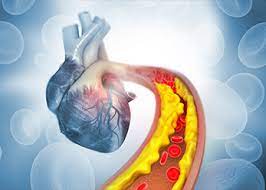Overview of Cholesterol and Lipid Disorders

shahennews
Important fats (lipids) found in the blood are
- Cholesterol
- Triglycerides
Cholesterol is an essential component of cell membranes, of brain and nerve cells, and of bile, which helps the body absorb fats and fat-soluble vitamins. The body uses cholesterol to make vitamin D and various hormones, such as estrogen, testosterone, and cortisol. The body can produce all the cholesterol that it needs, but it also obtains cholesterol from food.
Triglycerides, which are contained in fat cells, can be broken down, then used to provide energy for the body’s metabolic processes, including growth. Triglycerides are produced in the intestine and liver from smaller fats called fatty acids. Some types of fatty acids are made by the body, but others must be obtained from food.
Fats, such as cholesterol and triglycerides, cannot circulate freely in the blood, because blood is mostly water. To be able to circulate in blood, cholesterol and triglycerides are packaged with proteins and other substances to form particles called lipoproteins.
There are different types of lipoproteins. Each type has a different purpose and is broken down and excreted in a slightly different way. Lipoproteins include
- Chylomicrons
- Very low density lipoproteins (VLDL)
- Low-density lipoproteins (LDL)
- High-density lipoproteins (HDL)
Cholesterol transported by LDL is called LDL cholesterol, and cholesterol transported by HDL is called HDL cholesterol.
The body can regulate lipoprotein levels (and therefore lipid levels) by increasing or decreasing the production rate of lipoproteins. The body can also regulate how quickly lipoproteins enter and are removed from the bloodstream.
Levels of cholesterol and triglycerides vary considerably from day to day. From one measurement to the next, cholesterol levels can vary by about 10%, and triglyceride levels can vary by up to 25%.
Lipid levels may be
- Too high (dyslipidemia)
- Too low (hypolipidemia)
Lipid levels may become abnormal because of changes that occur with aging, various disorders (including inherited ones), use of certain drugs, or lifestyle (such as consuming a diet high in saturated fat, being physically inactive, or being overweight).
Complications of abnormal lipid levels
Abnormally high levels of certain lipids (especially cholesterol) can lead to long-term problems, such as atherosclerosis. Generally, a high total cholesterol level (which includes LDL, HDL, and VLDL cholesterol), particularly a high level of LDL (the “bad”) cholesterol, increases the risk of atherosclerosis and thus the risk of heart attack or stroke. However, not all types of cholesterol increase this risk. A high level of HDL (the “good”) cholesterol may decrease risk, and conversely, a low level of HDL cholesterol may increase risk.
The effect of triglyceride levels on the risk of heart attack is less clear-cut. But very high levels of triglycerides (higher than 500 milligrams per deciliter of blood, or mg/dL [5.65 mmol/L) can increase the risk of pancreatitis.
Measuring lipid levels
The fasting lipid profile (sometimes called a lipid panel), is the levels of total cholesterol, triglycerides, LDL cholesterol, and HDL cholesterol measured after a person fasts for 12 hours. Doctors usually do this test every 5 years starting at age 20 as part of assessing whether the person is at risk of coronary artery disease.
In children and adolescents, screening with a fasting lipid profile is recommended between the ages of 2 and 8 years if the child has risk factors, such as a family member with severe dyslipidemia or one who developed coronary artery disease at a young age. In children with no risk factors, screening with a non-fasting lipid profile is usually done once before the child reaches puberty (usually between age 9 to 11) and once more between the ages of 17 to 21.







